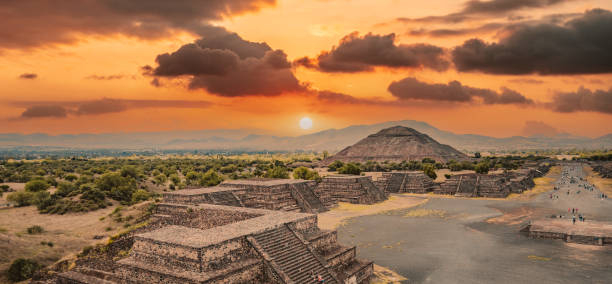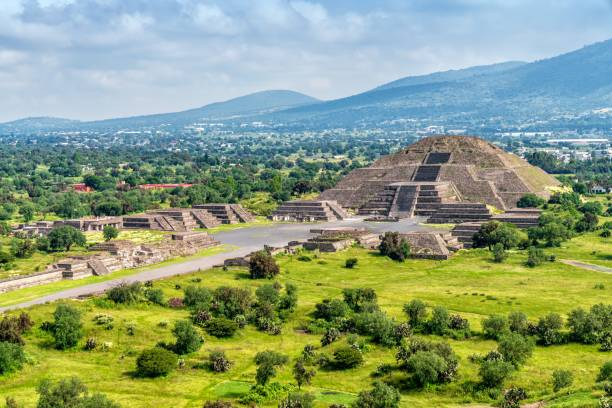Teotihuacan
One of the most well-known Aztec archaeological sites is Teotihuacan, which is situated on the outskirts of present-day Mexico City. But it wasn't actually constructed by the Aztecs. Despite many theories, nobody is really sure who did. However, the Aztecs did name it and make it their own when they stumbled across the abandoned city. In its prime, it was the largest city in the Western Hemisphere and home to a plethora of residential compounds and pyramids; some of which were as big as the Pyramids of Giza. Today, its two iconic pyramids, the Temple of the Sun and the Temple of the Moon, are the major highlights. Stroll along the Avenue of the Dead and visit the Citadel and the Temple of the Feathered Serpent.
Around the first century CE, Teotihuacan developed as a religious hub in the Mexican Highlands. It developed into the biggest and busiest city in the pre-Columbian Americas. Apartment complexes with many floors were erected in Teotihuacan to accommodate the vast population. The whole civilisation and cultural complex connected to the site is often referred to as Teotihuacan (or Teotihuacano). While it is debatable if Teotihuacan served as the capital of a sovereign empire, its effect on Mesoamerica is well known. Numerous locations in Veracruz and the Maya area include Teotihuacano relics. Later Aztecs claimed a shared lineage with the Teotihuacanos after discovering these spectacular monuments and modified and adopted certain features of their civilization.
Location: Teotihuacán, State of Mexico, Mexico

















